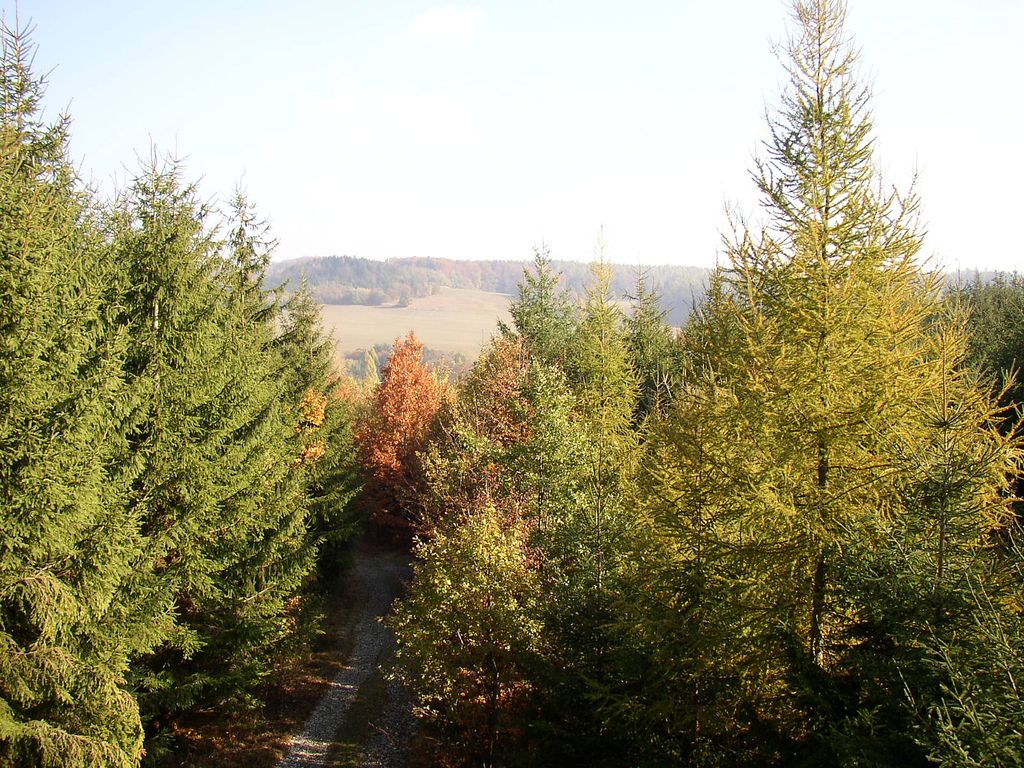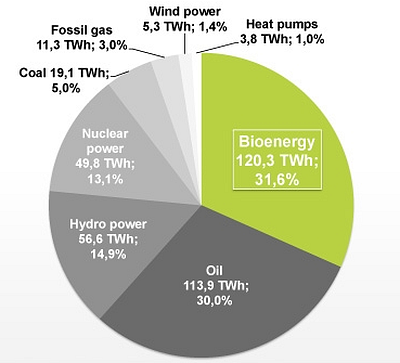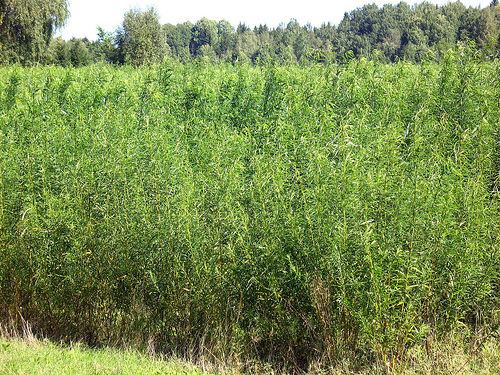6d.
Forests and fibres

Forests cover a substantial part of the land surface of the earth. In Europe, it is 44%, a figure that in Sweden and Finland increases to about 70%. About half of the forests in the world have been cut down during the development of human societies. Deforestation is still going on, now mostly in the Global South. This is serious since the tropical forests harbour a large part of the world’s biodiversity (See Chapter 6a). The boreal forests in Northern Europe are more monotonous.
Much of the existing forests have changed due to human intervention and are today more like monocultures, in the north of pine trees, and in the south of other economically interesting trees such as oil palm or fast-growing eucalyptus. In Europe, the only residues of the original large forest, which covered the continent, are found in Belarus and Poland. Nevertheless, forests remain an important part of the landscape and provide all kinds of ecosystems services (See Chapter 6a).
Forests are important for sustainable development. They can function both as sinks or sources of CO2 and other GHGs, and are thus an essential part of the climate change and the efforts to mitigate climate change (See Chapter 4b). Forests are growing slowly and for that reason they naturally bring in the issue of long-term management of a renewable resource. Concern for forest and forest survival led to the concept of sustainable development already in the 18th century (See Chapter 1a). Forests are a key natural resource for human society.
Forests constitute a renewable source of energy, a fuel. Wood was once the only source of energy in most societies. The excess harvesting of trees and bushes for cooking etc in some developing countries is a threat to proper land development. In western countries, wood as a source of energy takes several forms. Most important is traditional wood, but to that is added also wood waste or forest residues, such as branches and roots. The pulping liquor, or black liquor, from the processing of pulp, paper, and paperboard in industry represents about 50% of the material in wood. It contains lignin, which cannot be used for paper manufacturing. Waste paper and wood from constructions as well as residues from saw mills and other industries etc can be used as energy for example in district heating.

The use of bio energy in the energy mix of the EU and its member states is increasing. (See Chapter 4a). In Sweden, the figure is 32% and increasing. Wood biomass as pellets and wood chips is used in burners in individual homes and in power plants. Black liquor can be used directly, but is increasingly converted into biodiesel. So-called second generation biofuels rely on cellulose from wood being hydrolysed and subsequently fermented into ethanol. Paper and wood waste is burned in household waste incineration plants to produce heat and electricity.

Energy forests, also called short rotation plantations, are plantations of fast-growing species, e.g. Salix. They are harvested after 3–5 years, having reached a height of about 5–6 meters. Energy forest still represents only a small part of the bio energy market.
Wood is foremost a material for all kinds of constructions, from small objects to furniture and buildings. The technology of using sawed timber for building houses has improved dramatically during the last 20 years. Multi-storey and multi flat houses may today be built entirely by wood. This is an improvement compared to the use of concrete and plastics. Concrete production is causing some 5% of the world's CO2 emissions and need to be reduced. The transport of wood to the building site requires fewer efforts and energy, since wood is much lighter. The building time is also shorter for wooden houses, all making wood houses better economy. Finally, the end-of-life of a wooden building does not constitute a problem.
Wood is also the main source of fibres and chemicals used in all kinds of material. Most important is the production of paper, which uses the cellulose fibres in the wood, but also e.g. for insulation materials. The forest will also have to replace fossils for manufacturing. In a future without oil, the chemical industry (the largest industry sector in the EU) will need renewable sources for production of chemicals, including wood, to develop an entirely green chemistry.
Materials for session 6d
Basic level
- Read EHSA, book 3, chapter 13, pages 166-170: Sustainable Forestry.
- Read EHSA, book 3, chapter 17, pages 197-202: Biomass Production in Energy Forests.
- Study Białowieża National Park, the original European Forest.
Medium level (widening)
- Read EHSA, book 3, chapter 14, pages 171-178: Forestry in the European Union Parts of the Baltic Sea Region.
- Read EHSA, book 3, chapter 15, pages 177-186: Forests and Forestry in Three Eastern European Countries.
- Read Land Areas and Biomass Production for Current and Future Use in the Nordic and Baltic Countries (pdf-file) by Nordic Energy Research (NER) research project.
- The World's Remaining Great Forests by Jessica Aldred, the Guardian.
Advanced level (deepening)
- Study multi-story wooden houses. Resources include: Multi-Story Timber Building in UK and Sweden. In NZ Timber Design Journal.
- Global Forest Watch – Forest monitoring designed for action.
References
Karlsson, I. and L. Rydén (eds.). 2012. Rural Development and Land Use. Ecosystem Health and Sustainable Agriculture: Book 3. Baltic University Press, Uppsala.
BUP Sustainable Development Course
